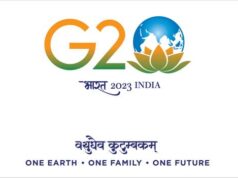The Nepal government budget in the financial year 2017/18 allocated the highest expense of the government to the recurring expenditure on administrative functions. A stalwart figure of NPR 499.15 billion which made for 39% of the total budget was spent on general public services. Without a doubt, with the formulation of 7 state governments and 753 local governments, this figure would enormously increase in size. However, sources of revenue do not seem to be expanding in tandem with the gigantic increase in expenses required to meet the requirements of the new federal system of governance. The International Monetary Fund projections for Nepal capped at about 3.2% (GDP growth, 2022) do not seem promising and thus coffers are expected to be covered up mostly with the help of foreign loans (since remittances have also been declining in the past few months). One other way in which a percentage could be met with is foreign investments.
But what would make foreign investments flow in the country? The answer could potentially be found in Nepal’s unique approach of managing its macro economy. For starters, the value of currency depends on the position of its neighbour, India, with which it is pegged. The same projection by IMF predicts India to be speedy accelerating economy of projections of about 8.2% (GDP growth, 2022). This in turn is likely to keep the dollar value of Indian Rupee at a steady rate, if not appreciating in value which in turn keeps the Nepali rupee stronger in the international currency market. So, how do we capitalise the situation? The answer to some extent lies in Central Bank’s interest rates game. If the currency is kept at a slowly appreciating value in the international market, the central bank could either increase or decrease rates with the following consequences.
One of the prime responsibilities of the central bank is to maintain price stability. As we can foresee rising government expenditure will lead to a significant rise in aggregate demand in the economy, inflation then would seem inevitable. In order to control high inflation, central bank will have to tighten its monetary policy, and thus increase the interest rate. However, with higher interest rate, the cost of borrowing increases which in turn would reduce private sector investment in the economy. The reduction in private investment could adversely affect the economic growth of the county, which is a negative consequence of the rise in interest rate.
But, apart from maintaining price stability, there is another positive side which is a consequence of the interest rate hike. With the rise in interest rate, return on capital will increase which would induce more capital inflow into the country. Furthermore, given the rising strength of the Indian economy and Nepal’s fixed exchange rate regime with India, we can assume the expectation of the foreign investors regarding the future value of the Nepalese currency to be on a positive trend. This would complement the higher interest rate in bringing more capital in the country.
However, in order for the above phenomenon to materialize, it could take a considerable amount of time. Additionally, there are chances that things might not move as explained above as numerous other variables come into play which have not been accounted for. Therefore, hiking the interest rate might turn risky as private investments are crowded out and economy may move towards the downward direction. Considering this fact, the central bank could instead opt for an expansionary monetary policy and, keep the interest rate from increasing further. This would leave the private sector investment unaffected and would save the economy from plunging. But again, with this policy, we can expect significant rise in inflation rate. Given, the constant rate of interest (unchanged rate of return on capital) and higher expected rate of inflation, the owner of the foreign capital inside the country can easily anticipate a reduction in the real value of their capital. This would induce them to take the capital out of the country reducing the level of foreign investment in the country.
Both of these options have positive and negative aspects. Before implementing any of these policies, it is necessary to look into the responsiveness of private investment with respect to interest rate and, the behaviour of the foreign capital with respect to interest rate and inflation. For instance, if private investment is highly responsive to the change in interest rate and foreign capital inflow is relatively less responsive to the change in interest rate, extremely tight monetary policy is not desirable. In this case, high increase in the interest rate will crowd out private investment but will not cause an increase in the inflow of foreign capital, thus hampering the economic growth.
However, this comes with a cautionary note. For a first, this is not to indicate cent percent likelihood of the situation as described above. Multiple factors influence the likelihood of either or neither of these situations taking form. And secondly, a considerable amount depends on the Indian economy being strong, even though projections and policies favour a booming Indian economy, yet they are projections and should be taken with a cautionary approach. Thus, while the above could be taken into consideration through economic conjecture, a blanket promise of the same is not advocated through the above article.
Post Disclaimer
The opinions expressed in this essay are those of the authors. They do not purport to reflect the opinions or views of CCS.






